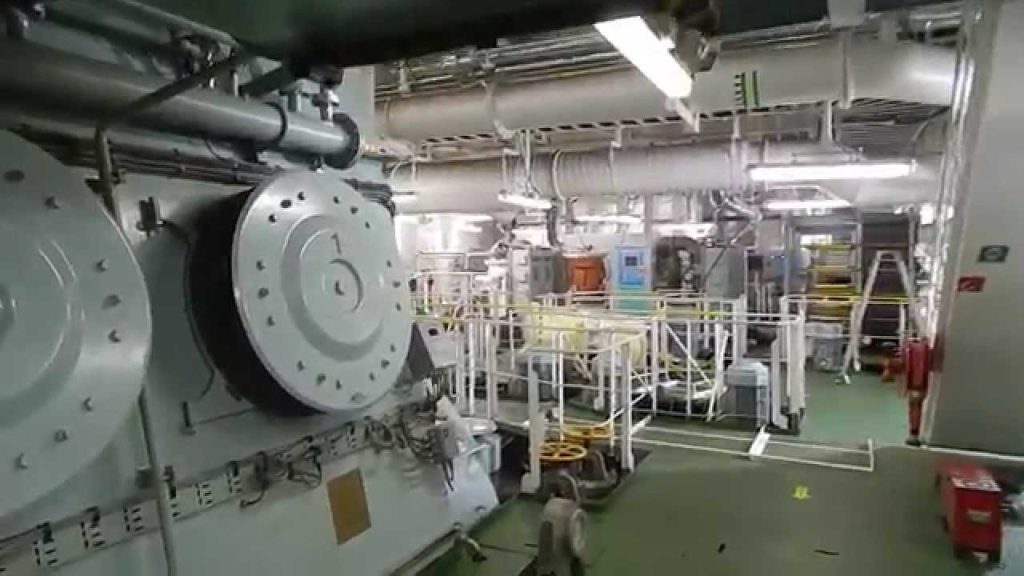A ship’s main engine is a massive structure with an average height of about 3 to 4 storey building (approx. 45 feet) and weight equals to 500 giant African elephants ( 2500 tonnes). While installing a new main engine in the engine room, the procedure is divided into parts on the basis of different parts of the engine. The engine is installed in parts in the shipyard itself during the ship building process.
The enormous structure of the main engine consists of several moving parts (both rotating and reciprocating) which transmits the engine mechanical power to the propeller for moving the ship further.

As all the components of the main engine are under different forces, the engine must be secured to the ship firmly to avoid any damage due to excessive vibrations.
The main engine is fitted on the ship’s hull with the help of holding down bolts and chocks. The floor where the engine is installed is excessively strengthened by heavy flooring and using additional bars and girders. The bedplate which is the base of the engine is attached by means of holding down bolts and chocks arrangement.
There are mainly two chock materials that are used to hold the main engine-
1. Cast steel Chock.
2. Epoxy resins Chock.
Cast steel chocks require expertise for installation and are expensive to use. In today’s time, marine engine makers are recommending epoxy resin based chocks which do not require any special measures and are also cost effective.
Advantages:
· Deliver almost 100% contact even on a rough surface.
· Cheap installation and no special hands are required.
· Chemical resistant
· Non corrosive
Disadvantages:
· If engine is misaligned or chocks are incorrectly fitted, the overall life reduces.
· Over tightening or stressing of holding bolts may lead to chock damage.
· Maximum temperature of exposure is 80 °C.


